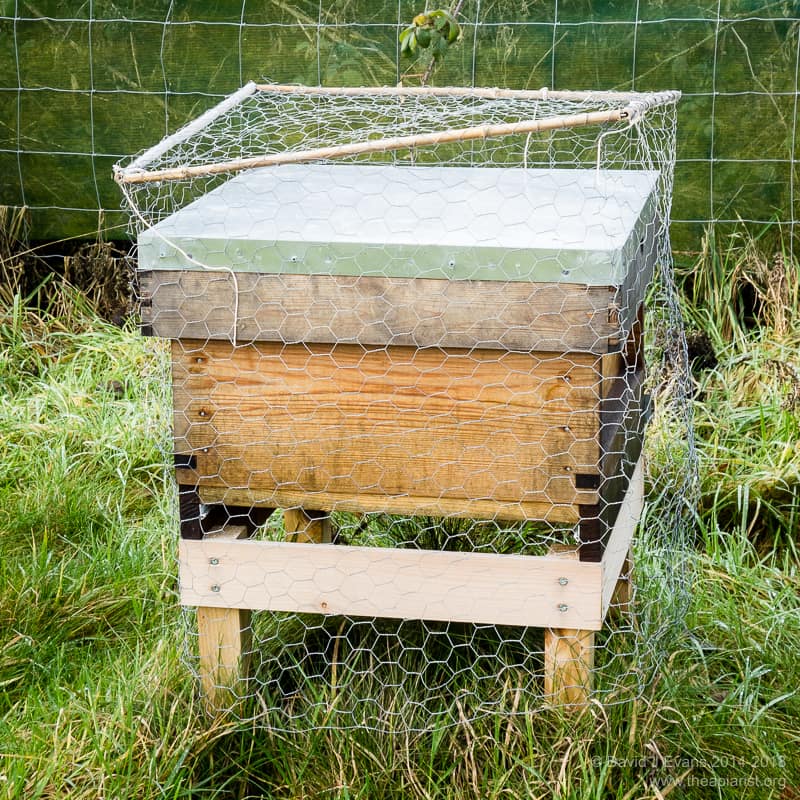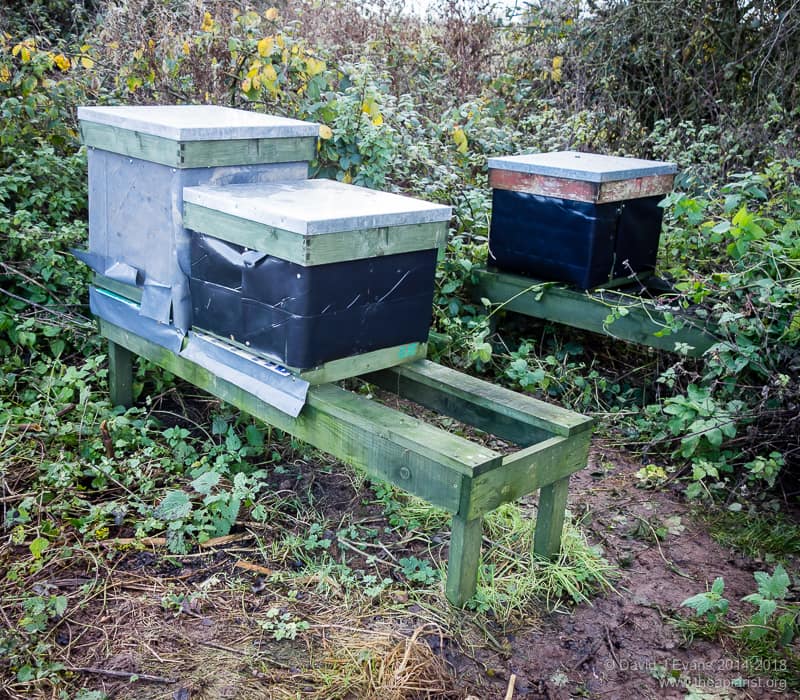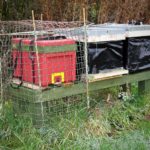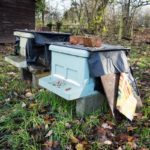Woodpeckers

Chicken wire cage …
In very cold weather green woodpeckers can cause damage to beehives when they try and get at the bees and brood. Until the temperate is below 0ºC for an extended period this usually isn’t an issue, but in a prolonged cold snap beehives can represent easy pickings for a hungry bird. I believe that this is learned behaviour and appears to vary in different areas. Around here they know that cedar, or even better poly, hives can be ransacked so these need to be protected during the winter. There are two easy ways to achieve this. One approach is to build a cage of chicken wire, supported on canes. This can be lifted away reasonably easily and ensures the hive doesn’t get too damp. However, it’s more difficult to construct and takes up more storage space during the summer. The alternative approach is to wrap the hive body in old plastic fertiliser or compost sacks. Damp proof membrane (DPM) is often available in skips and is even better as it it more robust and doesn’t get shredded in high winds.

Wrapped for winter …
Using drawing pins I attach the DPM around the top of the brood box. Don’t fix it to the crownboard as you’ll probably have to lift this mid-winter to apply oxalic acid. If the plastic is fixed to the brood box it can usually be left in place during oxalic acid treatment. A single layer thick is sufficient … it presumably works by preventing the woodpecker perching on the side bars and breaking through. Whenever I’ve seen woodpecker damage it’s always to the sides of the brood box where the frame lugs are.
Polystyrene hives need additional protection for the roof as well. I’ve even had blue or great tits damage the roof of an overwintered Paynes nuc box. I tend to move these nucs to a sheltered spot in the garden which is rarely visited by woodpeckers, rather than leave them unattended in out apiaries. Finally, if you do use plastic, use sufficient pins to hold it securely in place in bad weather and don’t leave any gaps for Woody to get through …
- Polyhives and polythene …
- Incomplete protection …


Join the discussion ...